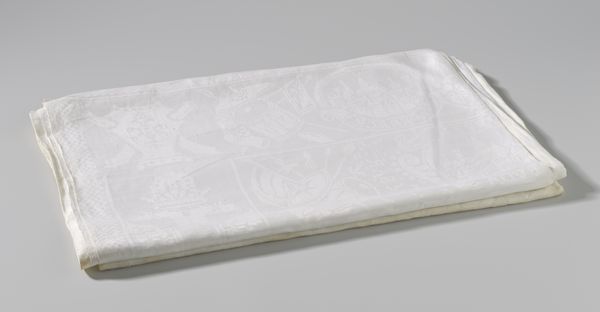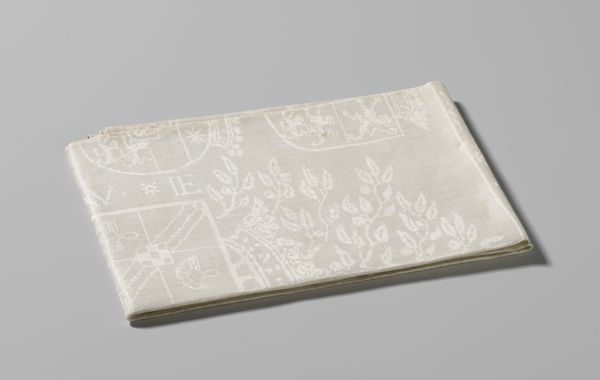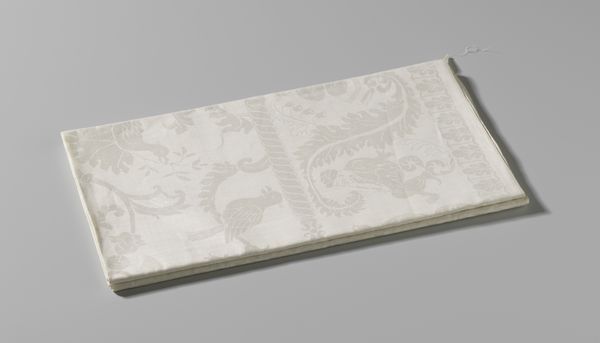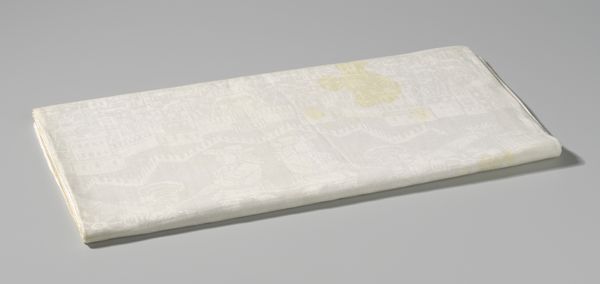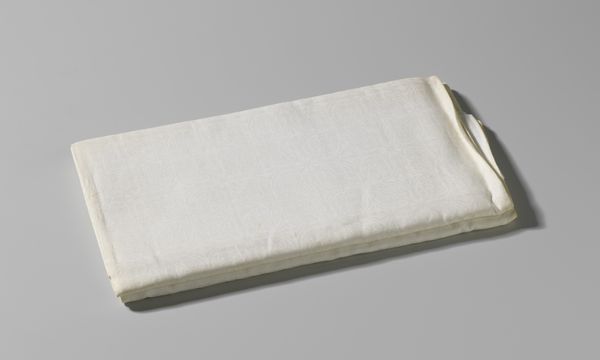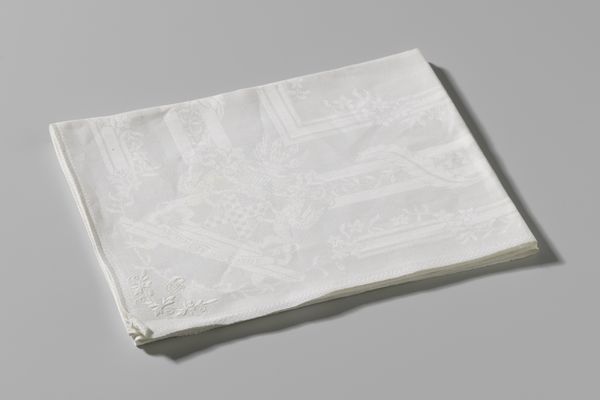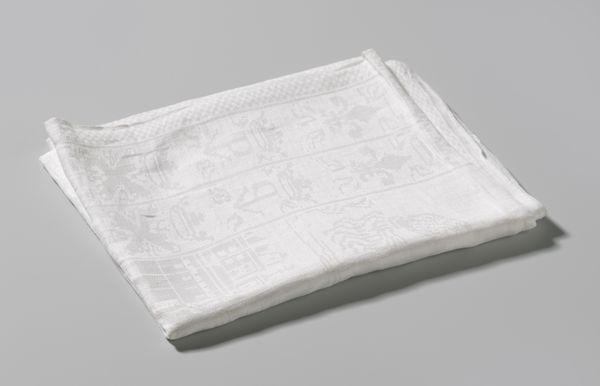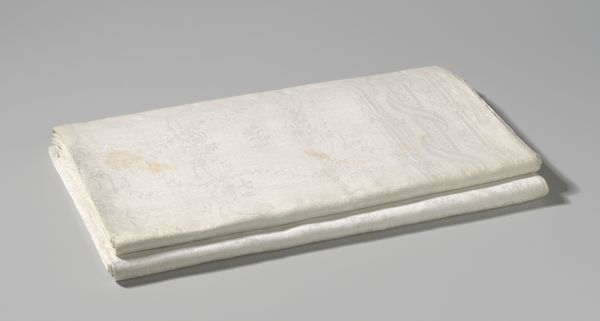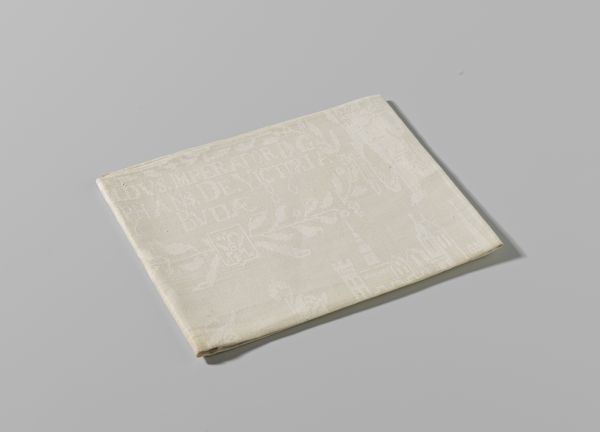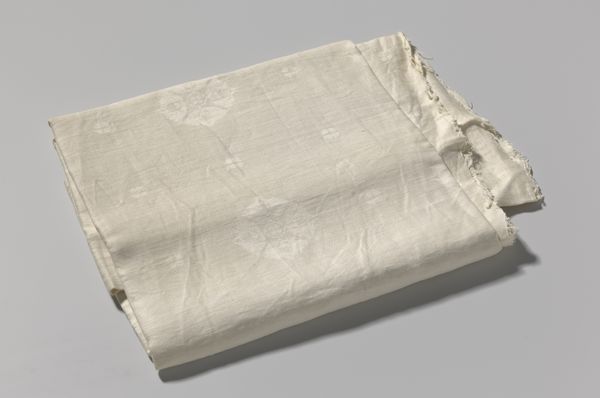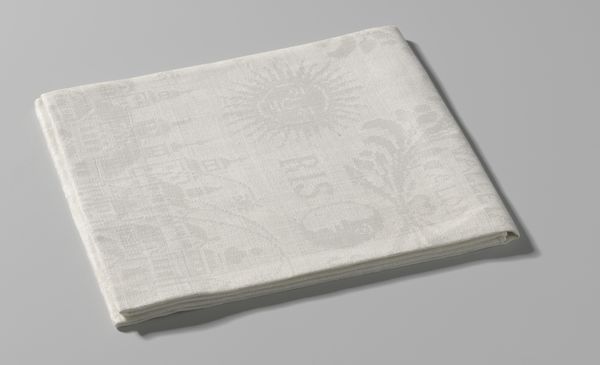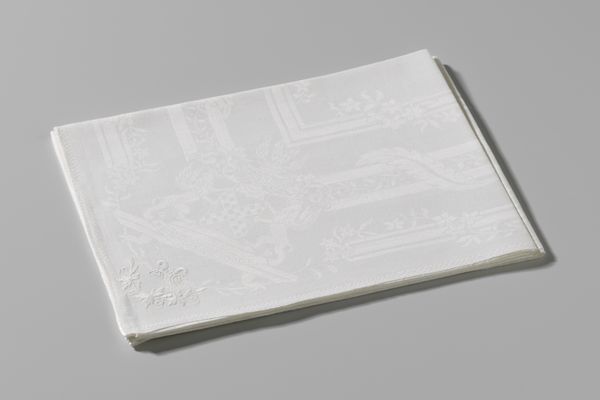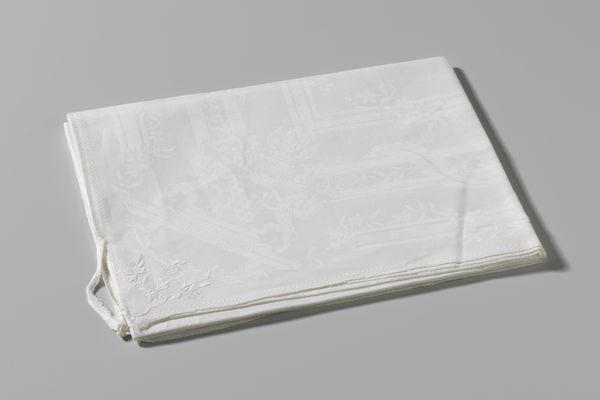
Tafellaken met de verovering van Neuhäusel, Gran, Buda en Pest door Leopold I, keizer van Duitsland c. 1686
0:00
0:00
anonymous
Rijksmuseum
textile
#
baroque
#
textile
#
figuration
#
history-painting
Dimensions: height 208 cm, width 214 cm
Copyright: Rijks Museum: Open Domain
This linen tablecloth commemorates the conquests of Neuhäusel, Gran, Buda, and Pest by Leopold I, the Holy Roman Emperor. Its anonymous maker employed a damask weave, a technique where patterns are created through contrasting warp and weft-faced areas. The choice of linen is significant; it's a durable, absorbent material perfect for high-end domestic use, reflecting the wealth of its intended owner. The damask weaving process itself is labor-intensive, demanding specialized looms and skilled weavers. The intricate designs, celebrating military victories, would have been painstakingly programmed into the loom, indicating considerable investment in both time and expertise. Textiles like this existed within a complex web of trade, labor, and status. While the cloth served a functional purpose, its decorative and commemorative aspects elevated it beyond mere utility. It represents a tangible connection to the political events of the time, filtered through the lens of craft production and domestic life. So next time you're setting the table, remember that even the simplest objects can carry rich cultural and historical significance.
Comments
No comments
Be the first to comment and join the conversation on the ultimate creative platform.
